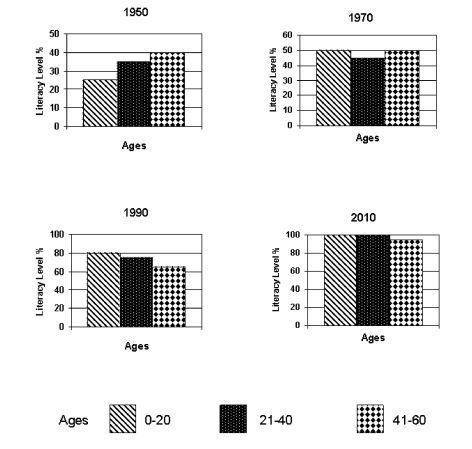The graphs below show the changes in literacy rates in an African country between 1950 and 2010.
Summarise the information by selecting and reporting the main features, and make comparisons where relevant.
The presented four bar graphs show changes in the literacy rate amongst three age categories in an African country from 1950 to 2010.
A glance at the graph reveals that, in 1950, the youngest age group (0-20) is the lowest in terms of literacy (around 25%). The next group (21-40) showed a significantly higher percentage than their younger countrymen with 35% and the oldest group (41-60) had the highest literacy rate (40%)
In 1970, the literacy rate in the age group (0-20) doubled than that of 1950. In the next age groups (21-40) and (41-60) an incline of 10% each in the ratio of educated people can be seen in comparison to that of 1950.
Probing further, 1990 saw continued growth in literacy rate among all three age groups. For the first time, the youngest age group (0-20) led the literacy rates with 80 % and the age bracket (21-40) was accounted to be around 75%. People aged 41-60 were following behind with nearly 65%. Furthermore, in 2010 a very healthy improvement in literacy rates across all age groups was witnessed. Both age groups (0-20) and (21-40) touched the peak of a 100% literacy rate, whereas, 41-60 years old people having an ability to read and write were roughly 95%.
Overall, the graphs showed a continuous, steady upward literacy trend across all three age groups.

